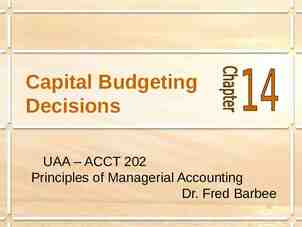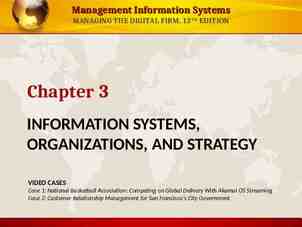Automated External Defibrillator (AED) Familiarization
16 Slides5.97 MB
Automated External Defibrillator (AED) Familiarization Training Presented by the Office of Public Safety, Health, and Emergency Management
Tips and notes for using this presentation 1. 2. 3. 4. 5. 6. 2 Have your speakers turned on and the volume turned up. Open the presentation to full screen for the best performance. You must manually advance each slide. When presented with a video, click on the arrow to play. Click on the QR code at the end to take a satisfaction survey. Questions? Email me at: [email protected]
Learning Objectives This training is not meant to be considered a certification course, but a familiarization course in the use of the Automated External Defibrillator, more commonly known as an AED. It is recommended that all students, staff, and faculty take part in a certified first aid/CPR/AED/Bleeding Control course. There are many organizations in the area that can train you in these life-saving techniques. Although many of these courses may be online, it is important to participate in a class that offers an in-person, hand’s-on experience to practice the skills necessary to perfect these extremely important life-saving techniques. 3
Good Samaritan Law An individual who provides medical aid will not be held civilly liable if they act in a reasonably prudent manner. An individual who is not covered otherwise by this section is not civilly liable for any act or omission in providing assistance or medical aid to a victim at the scene of an emergency, if: (1) The assistance or aid is provided in a reasonably prudent manner; (2) The assistance or aid is provided without fee or other compensation; and (3) The individual relinquishes care of the victim when someone who is licensed or certified by this State to provide medical care or services becomes available to take responsibility. MD Code, Courts, and Judicial Proceedings, § 5-603 4
AED’s, Locations, and Contents Montgomery College has more than 90 Automated External Defibrillators and placed them in cabinets in every building over all three campuses. The AEDs are easily accessible and mounted on the wall next to a bleeding control kit, and in high-risk / high-traffic areas. 5
AEDs at Montgomery College Montgomery College utilizes several different styles of AEDs across all three campuses. Even so, they basically operate the same and follow the same principles for their use. 6
What is an AED? An AED, or automated external defibrillator, is used to help those experiencing sudden cardiac arrest. It’s a sophisticated medical device, yet easy to use, that can analyze the heart's rhythm and, if necessary, deliver an electrical shock, or defibrillation, to help the heart re-establish an effective rhythm. Source: redcross.org (2022) 7
How Does an AED Work? A built-in computer checks a victim’s heart rhythm through adhesive electrodes. The computer calculates whether defibrillation is needed. If it is, a recorded voice prompts the rescuer to press the shock button on the AED. This shock momentarily stuns the heart and stops all activity. It gives the heart the chance to resume beating effectively. Audible prompts guide the user through the process. AEDs advise a shock only for ventricular fibrillation or another life-threatening condition called pulseless ventricular tachycardia. Source: heart.org (2017) 8
AED Overview (LifePak CR Plus) The AED shown here is one of several devices in use here at Montgomery College. “ AEDs are safe to use by anyone. Some studies have shown that 90 percent of the time AEDs are able to detect a rhythm that should be defibrillated. This data suggests that AEDs are highly effective in detecting when (or when not) to deliver a shock.” Source: heart.org (2017) 9
When to Use? (LifePak CR Plus) The AED should only be used on victims of Sudden Cardiac Arrest (SCA) who are: Unconscious and unresponsive Not breathing or not breathing normally. *Do not use on a victim that is conscious and responsive! 10
How to Use the AED (LifePak CR Plus) 1. Check the scene to make sure it is safe. 2. Check to see if the person is breathing and has a pulse. 3. If the person is not breathing and has no pulse, call 911 and retrieve the AED. a) If another person is available have them call 911 while you begin life-saving efforts without delay. 4. Press the green ON/OFF button to turn on the AED. A solid green indicator light illuminates when the AED is turned on. 5. Prepare the victim by: 1. Removing all the clothing from the chest area. 2. Dry their chest if wet. 3. Apply the pads in the proper position. 6. Prepare to let the AED analyze by announcing, “CLEAR!” in a loud voice and ensure no one is touching the victim. 7. Deliver the shock by pushing the “shock” button if it is indicated. 8. After the AED delivers the shock, or no shock is advised, begin CPR immediately, starting with compressions. 11
A Video of AED Use Click the arrow to start the video. 12
Important Information Public Safety will: Inspect AED’s monthly. Check the AED cabinet and carrying case. Check the AED. Check the rescue kit (CPR mask, gloves, razor, shears, wipes, gauze, and pediatric mask). Complete the monthly inspection form. The Public Safety Office needs to be informed every time an AED is taken out of the cabinet. Even if it is not used. A maintenance check should be performed by a reputable AED dealer once a year. 13
In conclusion: REMEMBER: It is recommended that all students, staff, and faculty take part in a certified first aid/CPR/AED/Bleeding Control course. You can make a difference when a friend or family member is in need of medical assistance. 14
Questions? Michael D. Harting Emergency Management and Outreach Coordinator Public Safety, Health, and Emergency Management [email protected] www.montgomerycollege.edu/safety 15





















